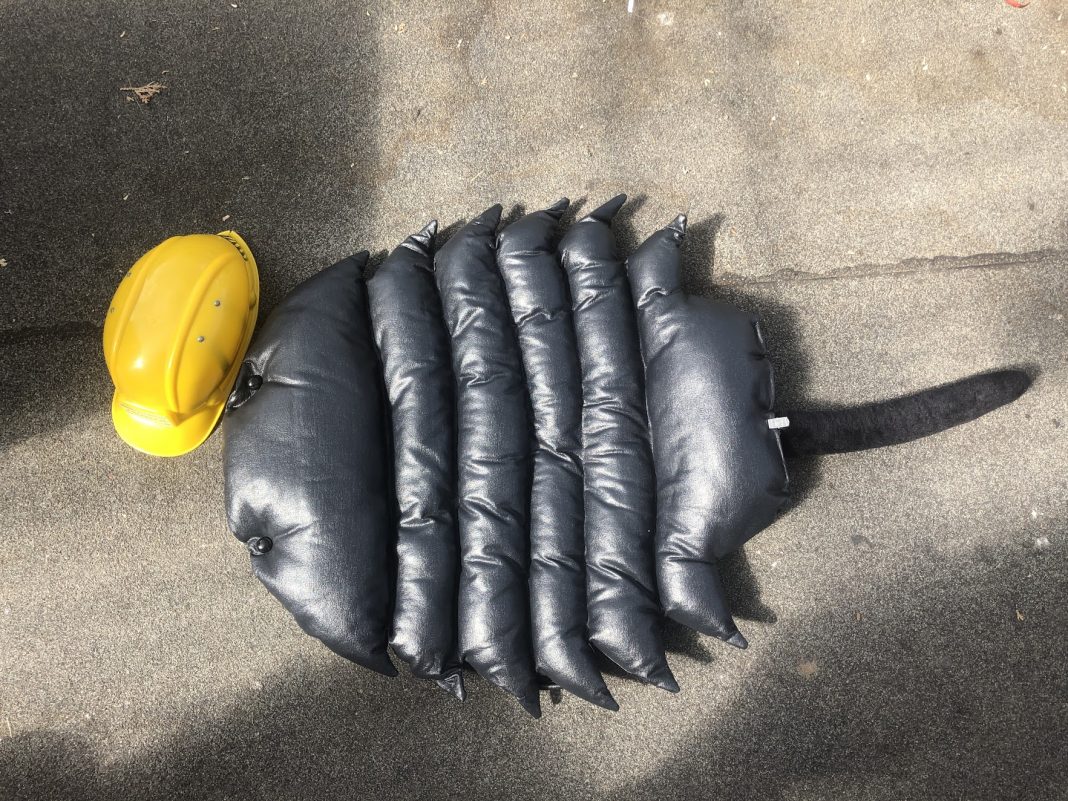Submitted by South Sound GREEN
In the face of COVID-19 and recent stay at home order, parents and guardians may find themselves looking for activities that not only keep students engaged, but also provide information about local environmental science and concerns. In our South Sound GREEN Home Based Science Project series, we will introduce and demonstrate various hands-on and at-home activities for children of all ages to do either indoors or outside!
 This time, we are learning about the world of invertebrates by pretending to be one at home!
This time, we are learning about the world of invertebrates by pretending to be one at home!
Become the Stream Bug
Grade Level: K-5th
Materials (all optional)
- Pipe cleaners
- Old backpack
- Sunglasses
- Straws
- Whatever else you can find!
Background
 Salmon, as we have discussed in earlier ThurstonTalk articles, are a very important native fish species here in the South Puget Sound region. Even though salmon live underwater, are covered in scales and slime, and breathe with gills, they’re actually a lot more similar to humans than you might imagine. That’s because both fish and humans are vertebrates, which means that they both have a backbone, or spine. Backbones are very important for animals, as they provide a lot of structural support for their bodies – imagine how hard it would be to move around without a spine! Reptiles, amphibians, and birds are also all vertebrates. But what about animals that don’t have this backbone? How do they move around or function?
Salmon, as we have discussed in earlier ThurstonTalk articles, are a very important native fish species here in the South Puget Sound region. Even though salmon live underwater, are covered in scales and slime, and breathe with gills, they’re actually a lot more similar to humans than you might imagine. That’s because both fish and humans are vertebrates, which means that they both have a backbone, or spine. Backbones are very important for animals, as they provide a lot of structural support for their bodies – imagine how hard it would be to move around without a spine! Reptiles, amphibians, and birds are also all vertebrates. But what about animals that don’t have this backbone? How do they move around or function?
We call animals that do not have a backbone invertebrates. Many common animals, from insects to shellfish to corals, are invertebrates. In fact, the majority of animals on Earth are invertebrates – some people even think invertebrates might make up 97% of all animals on the planet!
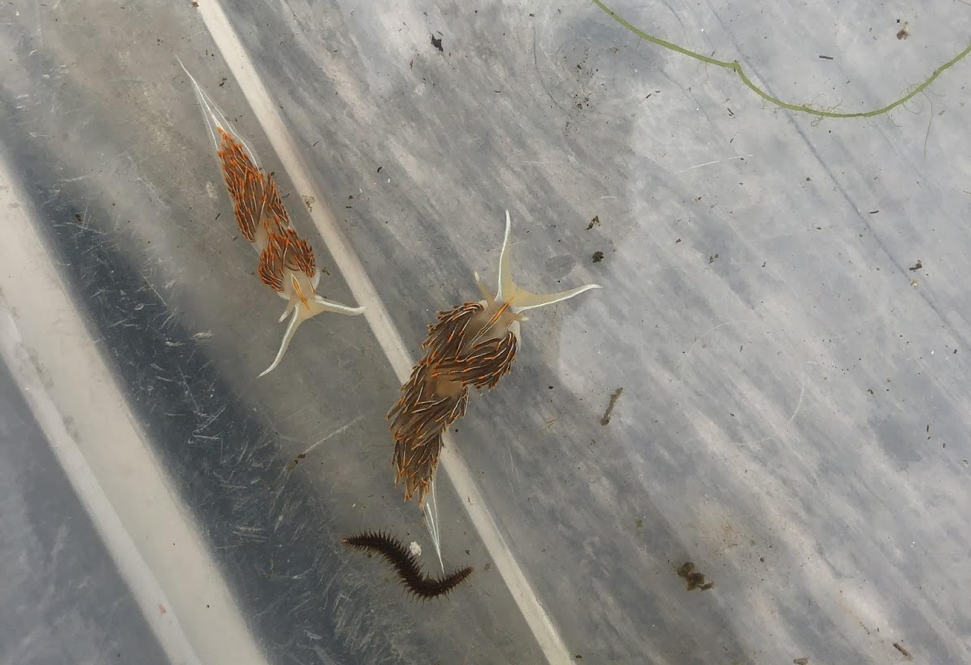
Some of these invertebrates that are particularly important for salmon are called benthic macroinvertebrates, or stream bugs. Benthic means that they live on the bottom of the seafloor or riverbed, and macro means that they are pretty small but still large enough to be seen by the naked eye. One reason that stream bugs are so important to salmon is that young salmon often feed on stream bugs after they move out of their alevin stage. Another is that stream bugs can give scientists a better idea about the biological health of a stream or river. Certain stream bugs are considered to be tolerant of pollutants, while others are considered to be sensitive to pollutants. If a scientist conducts a stream bug survey and finds only bugs that are tolerant of pollutants, it could mean that the stream contains a lot of pollutants and may be unhealthy for salmon. At South Sound GREEN, we frequently lead stream bug labs with students to explore the benthic macroinvertebrates that live in our local waterways and assess the health of the water for salmon!
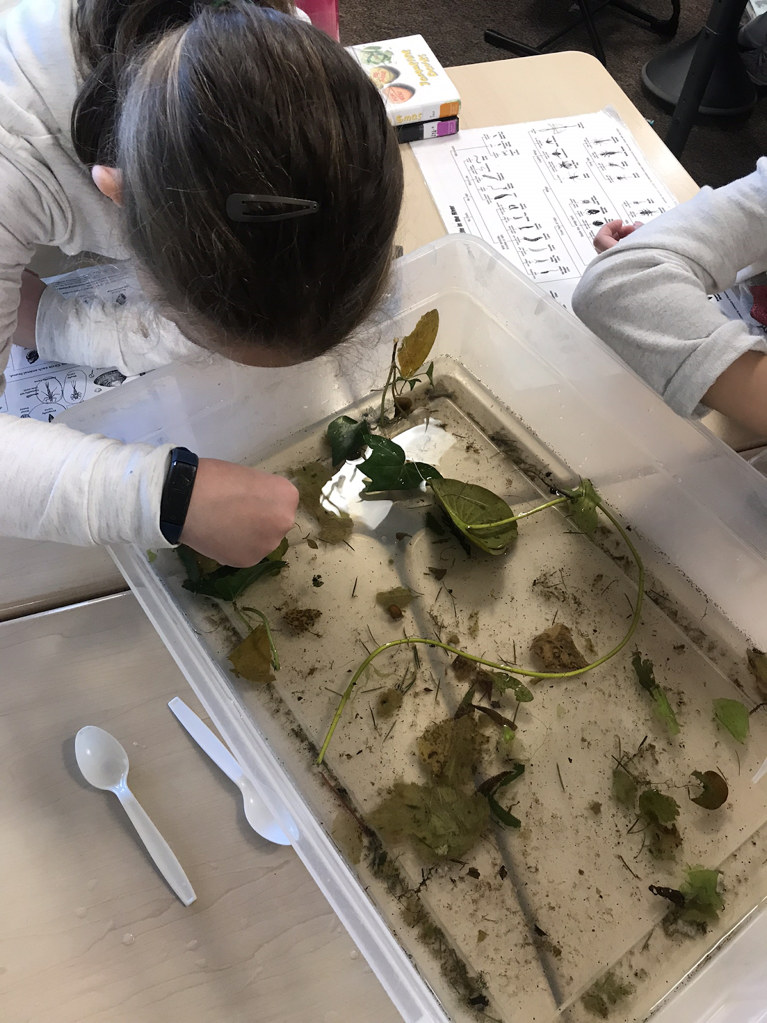
Because these creatures do not have a backbone, they need other strategies to move around, stay protected, and do everything else necessary to survive. In this activity, you will be pretending that you’re the benthic macroinvertebrate and trying out (or trying on) some of these strategies yourself!
Procedure
- You can make use of whatever you have in your home for this activity! The items depicted in the pictures below were created by South Sound GREEN for classroom presentations and are only a few examples of what you can create!
- For turning yourself into a stream bug, you can use this stream bug ID guide for inspiration.
- A lot of invertebrates need some sort of protection from predators, and often this is done with a hard exterior shell, or exoskeleton. Use an old backpack and a helmet to pretend like you have a hard exoskeleton! Feel free to make alterations to look more like a specific bug from the ID guide.
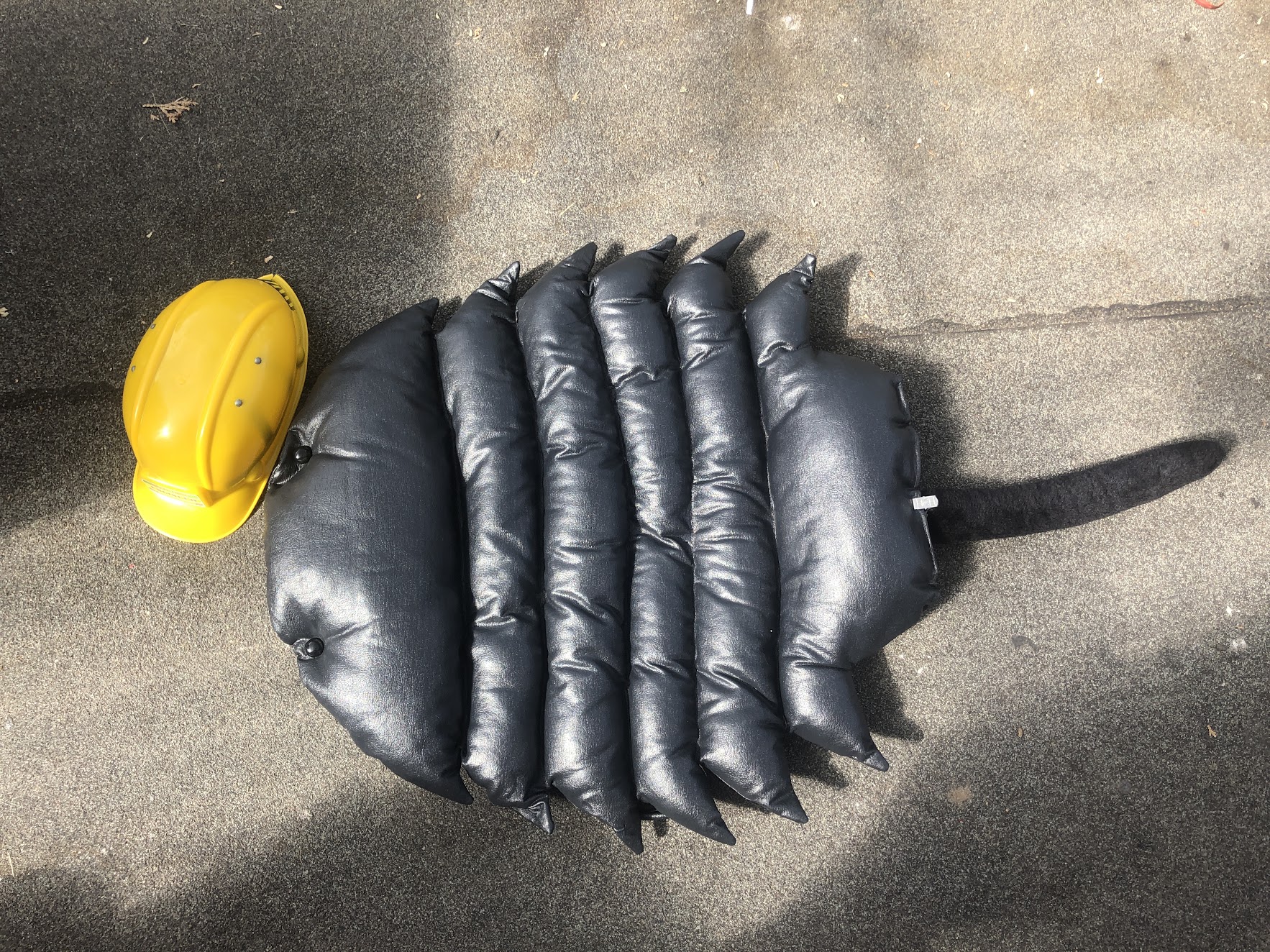
- Stream bugs usually live in the dark depths of river beds, where there isn’t very much light. Wear your coolest sunglasses to represent a stream bug’s special eyes, and make a set of antennae out of pipe cleaners or an old head band to feel around in the dark!
- To breathe underwater, some invertebrates have fluffy, feathery gills. Find a fluffy piece of clothing (or feather boa, if you have one) and wrap it around you to show off your gills!
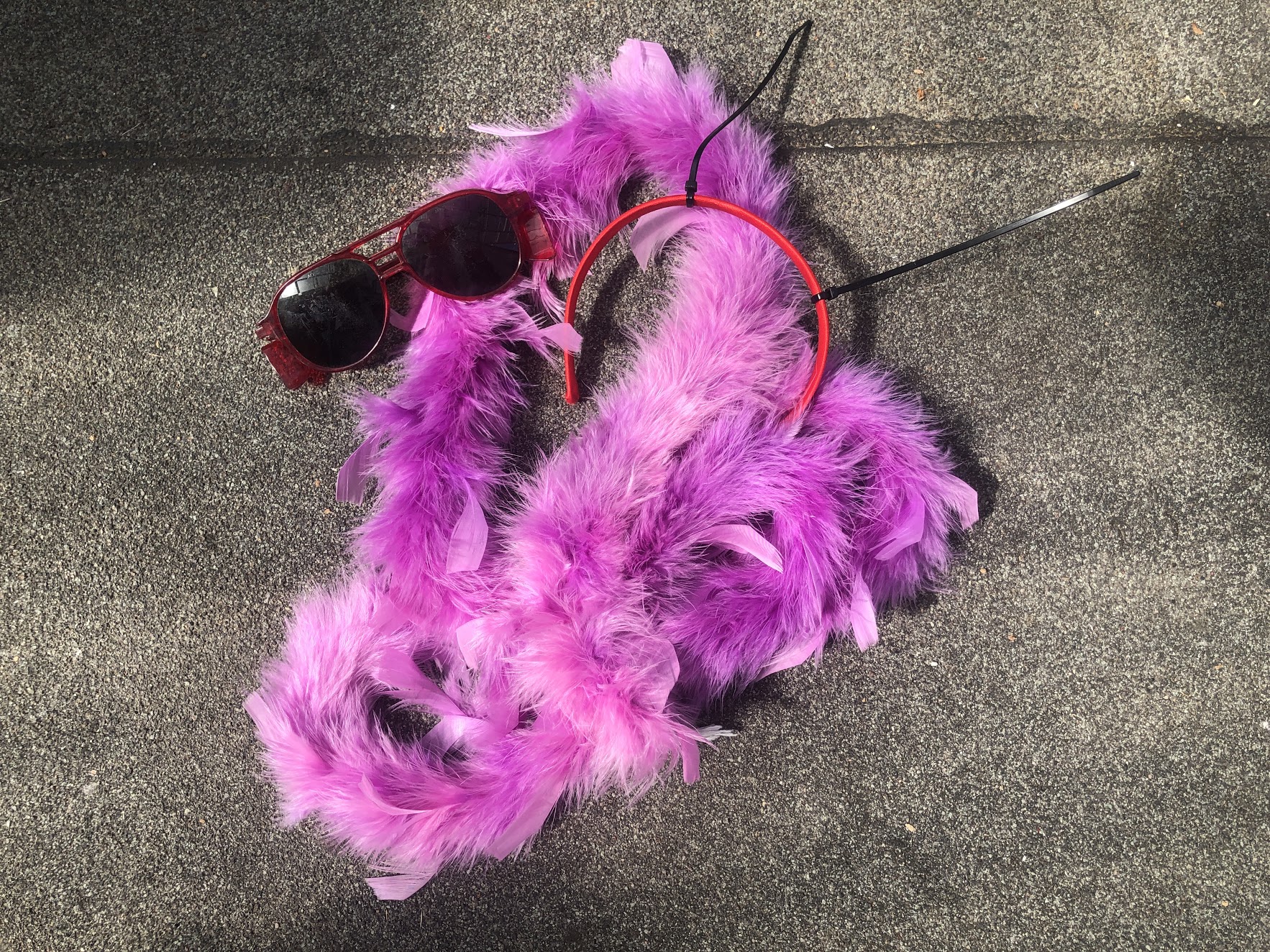
- Stream bugs have different mouths than humans have. Their mouths can be like straws, used to suck up whatever they’re trying to eat. Use straws to imitate a stream bug’s mouth!
- Add any additional materials you would like to replicate becoming a stream bug.
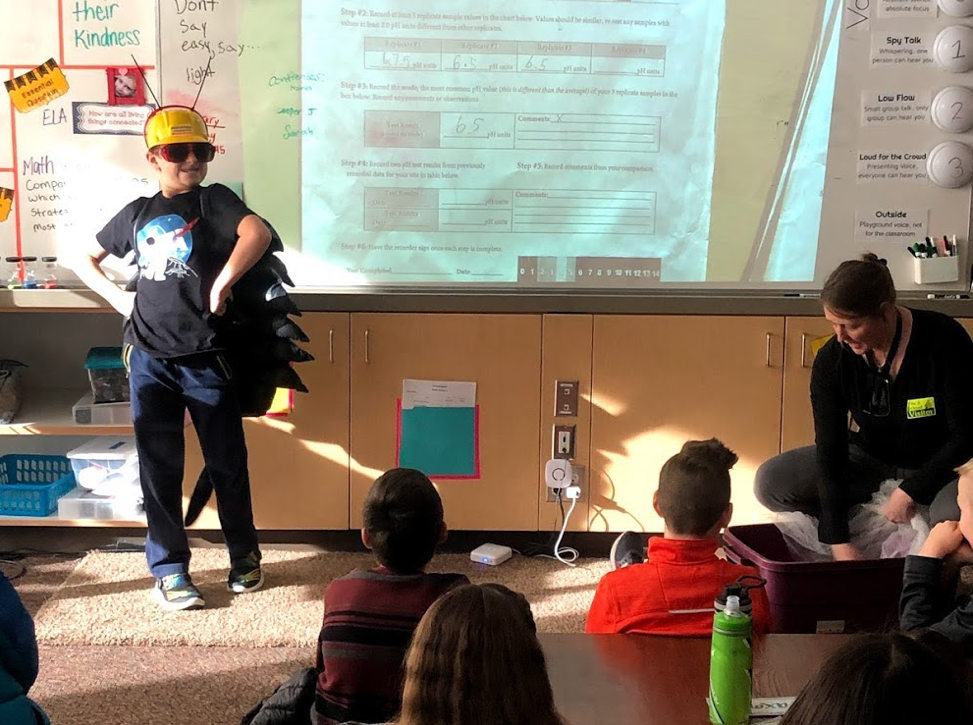
- Bonus: now that you look like a stream bug, act like a stream bug! Crawl along the “river bed”, hide under rocks and leaves, eat only through a straw, etc.
Vocabulary
- Benthic: Living at the bottom of the water column, on the bottom of the seafloor, river bed, or lake bed
- Biological: Relating to living organisms
- Invertebrate: An organism that does not have a backbone, i.e. streambugs
- Macroinvertebrate: An invertebrate that is large enough to see with the naked eye
- Vertebrate: An organism that has a backbone, i.e. humans
Keep Learning!
- Go looking for real stream bugs! They like to live in river beds and lake beds, usually underneath rocks or plants. Identify the ones that you find using this stream bug ID guide! Or go one step further and evaluate the biological health of the waterway using this stream bug biotic index.
- Learn about some more cool invertebrates on land and in the water with National Geographic
- Share your stream bug costumes with us on Instagram! Use the hashtag #GREENfromhome or find us at @southsoundgreen.
South Sound GREEN (Global Rivers Environmental Education Network) is a watershed education program in Thurston County that educates, empowers and connects thousands of local students in watershed studies annually. Through South Sound GREEN, participants engage in science and engineering practices related to water quality in South Sound. For more information, visit southsoundgreen.org.







































